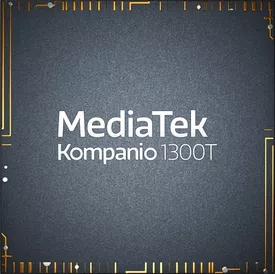MediaTek Dimensity 9000 Plus vs MediaTek Kompanio 1300T
SOURCE ARTICLES
Dimensity 9000 Plus vs Dimensity 9000: tests and benchmarks
nanoreview.net
The Dimensity 9000 Plus has advantages over the Dimensity 9000, including a higher GPU frequency, better AnTuTu scores, and a higher CPU clock speed. In benchmarks, the Dimensity 9000 Plus outperforms the Dimensity 9000 in both AnTuTu and Geekbench tests. The specifications of both chips are similar, with the Dimensity 9000 Plus having a slightly higher GPU frequency and more efficient memory. Overall, the Dimensity 9000 Plus is the better choice.
Dimensity 9000 vs. Snapdragon 8 Gen 1 Special Review: Performance/Energy Efficiency & more
www.gizchina.com
The Dimensity 9000 outperforms the Snapdragon 8 Gen 1 in terms of CPU performance, with higher scores in Geekbench 5. The GPU performance is slightly inferior to the Snapdragon 8 Gen 1, but the gaming performance is similar in actual games. The Dimensity 9000 also has better temperature control, running cooler than the Snapdragon 8 Gen 1 during gaming. In terms of power consumption and energy efficiency, the Dimensity 9000 has a lower power consumption and higher energy efficiency ratio. Overall, the Dimensity 9000 is a clear winner in performance and energy efficiency.
MediaTek Dimensity 9000 Plus review
versus.com
The MediaTek Dimensity 9000 Plus has a CPU speed of 3.2 GHz, 2.85 GHz, and 1.8 GHz. It uses big.LITTLE technology to switch between powerful and less powerful cores for performance and battery life optimization. It also has Heterogeneous Multi-Processing for utilizing all cores or a single core for different tasks. The L2 and L3 cache sizes are unknown, but larger caches result in faster performance. The clock multiplier controls the CPU speed.
Benchmark showdown: Snapdragon 8 Plus Gen 1 vs Dimensity 9000 Plus
The review compares the Snapdragon 8 Plus Gen 1 and Dimensity 9000 Plus chips. The Dimensity 9000 Plus performs better in CPU-heavy workloads, while the Snapdragon 8 Plus Gen 1 has a slight advantage in graphics performance. MediaTek's chip has a larger cache and performs well in multi-threaded workloads. Both chips have good sustained performance, but the Dimensity 9000 Plus performs better in power consumption optimization. The Snapdragon's Adreno GPU is more future-proof. Overall, both chips offer high performance for demanding users.
Snapdragon 8 Gen 2 vs MediaTek Dimensity 9000+: Qualcomm is the undisputed GPU king
The Snapdragon 8 Gen 2 outperforms the MediaTek Dimensity 9000+ in terms of GPU performance, making Qualcomm the undisputed GPU king. However, the Dimensity 9000+ remains competitive in CPU performance. Qualcomm also excels in AI capabilities, while MediaTek struggles to keep up. In terms of power consumption, the Snapdragon 8 Gen 2 has a lower maximum wattage. Overall, Qualcomm's chipset is the best Android SoC currently available, with MediaTek having a tough challenge ahead to catch up.
MediaTek Dimensity 9000+ Processor - Benchmarks and Specs
The MediaTek Dimensity 9000+ processor has been benchmarked and its specs have been revealed. It performs well in average benchmarks and has a range of features.
Qualcomm Snapdragon 8 Plus Gen 1 vs MediaTek Dimensity 9000 Plus: Neck and neck in every aspect
The review compares the MediaTek Dimensity 9000 Plus and Qualcomm Snapdragon 8 Plus Gen 1 chipsets. The Dimensity 9000 Plus has higher clock speeds and a larger system-level cache. It performs well in CPU-centric computational tasks but falls behind in GPU performance compared to the Snapdragon 8 Plus Gen 1. Both chipsets drain battery quickly and have similar power efficiency. The Snapdragon 8 Plus Gen 1 performs better in CPU throttling tests. In terms of graphics, the Snapdragon's Adreno GPU outperforms the Mali GPU in the Dimensity 9000 Plus. Overall, the Snapdragon 8 Plus Gen 1 is considered the better chipset.
MediaTek Kompanio 1300T Chip Prioritizes 5G for Tablets
MediaTek has announced the Kompanio 1300T chip, which will bring 5G connectivity to Android tablets. The chip is part of the Kompanio processor range and offers power for video and gaming. It features an octa-core design, a nine-core GPU, and supports screens with up to 2.5K resolution and a 120Hz refresh rate. The chip also supports cameras up to 108-megapixels and 4K HDR video recording. MediaTek's APU A.I. chip enhances voice assistants and picture quality. The Kompanio 1300T connects to Sub-6 5G networks, supports dual SIM cards, and has Wi-Fi 6 and Bluetooth 5.2 connectivity. The chip is expected to make an impact in the Chinese market initially. The first tablets with the Kompanio 1300T chip are expected to arrive between now and September.
I was wrong: The MediaTek Kompanio 1300T isn’t for Chrome OS tablets at all
The MediaTek Kompanio 1300T is not designed for Chrome OS tablets, but for Android tablets. The chip rebrandings caused confusion, but the Kompanio 1300T has a similar architecture to the Kompanio 1200. The main difference is the GPU, with the 1300T using a nine-core Arm Mali-G77 MC9 GPU. The Kompanio 1300T is built on TSMC's 6nm process technology and integrates an octa-core CPU with high-performance Arm Cortex-A78 cores and power-efficient Arm Cortex-A55 cores. The Kompanio 1300T is not for Chrome OS tablets, but there are still MT8192 and MT8195 Chrome OS devices to look forward to.
MediaTek Kompanio 1300T Benchmark, Test and specs
The MediaTek Kompanio 1300T is a processor with 8 CPU cores and 8 threads. It achieved a Geekbench 5 score of 802 (single-core) and 3,088 (multi-core). It belongs to the 3rd generation of the MediaTek Kompanio series and has a hybrid architecture with 2 Cortex-A78 and 6 Cortex-A55 cores. It has an ARM Mali-G77 MP9 GPU with a frequency of 0.85 GHz. The processor supports h265/HEVC decoding and encoding, as well as other video codecs. It has a TDP of -- and is based on a 6 nm chip design. It is compatible with Android operating systems.
MediaTek Kompanio 1300T vs Qualcomm Snapdragon 780G 5G vs MediaTek Dimensity 1300
The MediaTek Kompanio 1300T, Qualcomm Snapdragon 780G 5G, and MediaTek Dimensity 1300 are compared in this review. The review discusses their performance benchmarks and highlights the absence of cached benchmarks.
MediaTek Kompanio 1300T vs Qualcomm Snapdragon 888: What is the difference?
The MediaTek Kompanio 1300T and Qualcomm Snapdragon 888 have differences in CPU speed, CPU threads, turbo clock speed, L2 cache, L1 cache, and clock multiplier. The MediaTek Kompanio 1300T has a CPU speed of 3 GHz, 4 x 2.6 GHz, and 3 x 2 GHz, while the Qualcomm Snapdragon 888 has a CPU speed of 2.84 GHz, 3 x 2.42 GHz, and 4 x 1.8 GHz. The MediaTek Kompanio 1300T has unknown CPU threads and turbo clock speed, while the Qualcomm Snapdragon 888 has unknown turbo clock speed. The MediaTek Kompanio 1300T has unknown L2 cache, L1 cache, and clock multiplier, while the Qualcomm Snapdragon 888 has unknown clock multiplier.
MediaTek Kompanio 1300T: everything we know
The MediaTek Kompanio 1300T is a new processor designed for tablets and laptops. It offers a seamless experience across devices and is built on a 6nm process. The chipset supports up to 108MP camera, 144Hz refresh rate, and 5G network. It has an eight-core configuration with four high-performance cores and four power-efficient cores. The graphics are handled by a nine-core GPU. It supports up to 16GB of memory and dual-channel storage. The chipset offers multiple 5G band support, Wi-Fi 6, and Bluetooth 5.2. It is focused on business, entertainment, and students, providing reliable connectivity, efficient performance, and all-day battery life. Tablets powered by the Kompanio 1300T are expected to be announced in Q3 2021.
MediaTek Kompanio 1300T Processor - Benchmarks and Specs
The MediaTek Kompanio 1300T Processor has been benchmarked and its specs have been analyzed. The review provides information on the device's performance and features.
+ 11
AI COMPARISON
Product Comparison Table
| Feature | MediaTek Dimensity 9000 Plus | MediaTek Kompanio 1300T |
|---|---|---|
| Total Clock Speed | 18.95 GHz | 19.4 GHz |
| RAM Speed | 3750 MHz | 2133 MHz |
| Semiconductor Size | 4 nm | 6 nm |
| Max Memory Size | 24 GB | 16 GB |
| GPU Turbo | 850 MHz | Not specified |
| DirectX Version | 12 | Not supported |
| 5G Support | Yes | Yes |
| CPU Threads | 8 threads | 8 threads |
| Max Memory Bandwidth | 60 GB/s | Not specified |
| GPU EU | 10 | Not specified |
| Big.LITTLE | Yes | Yes |
| HMP | Yes | Yes |
| DDR Version | 5 | 4 |
| Memory Channels | 4 | Not specified |
| LTE on SoC | Yes | Yes |
| OpenGL ES Version | Not specified | 3.2 |
| Upload Speed | 2500 MBits/s | Not specified |
| Download Speed | 7000 MBits/s | Not specified |
| Architecture | ARM Cortex | ARM Cortex |
| GPU | ARM Mali | ARM Mali |
Summary
The MediaTek Dimensity 9000 Plus and the MediaTek Kompanio 1300T are both powerful processors designed for different uses. The Dimensity 9000 Plus offers higher RAM speed, a smaller semiconductor size (4nm vs 6nm), and supports faster 5G download and upload speeds. It also supports DirectX 12, making it suitable for higher-end gaming and advanced applications that benefit from fast graphics processing.
The Kompanio 1300T, on the other hand, features a slightly higher total clock speed but a lower RAM speed and is optimized for Android tablets with features tailored towards high-resolution displays and powerful multimedia processing, such as support for dual-monitor outputs and high megapixel cameras.
Recommendations
-
For Mobile Gaming and Performance-Intensive Applications: The MediaTek Dimensity 9000 Plus is more suitable due to its higher GPU turbo, advanced RAM support (DDR5), and better overall benchmark performance in CPU and GPU tasks.
-
For High-End Android Tablets Focused on Media and Connectivity: The MediaTek Kompanio 1300T is the better choice, offering specialized features for tablets, like enhanced AI capabilities and robust 5G connectivity suitable for multimedia consumption and light gaming.
PRICES
ASK AI
BestVs.ai
Hello, I'm your AI shopping assistant. How can I help you?
AI can make mistakes. Consider checking important information.


